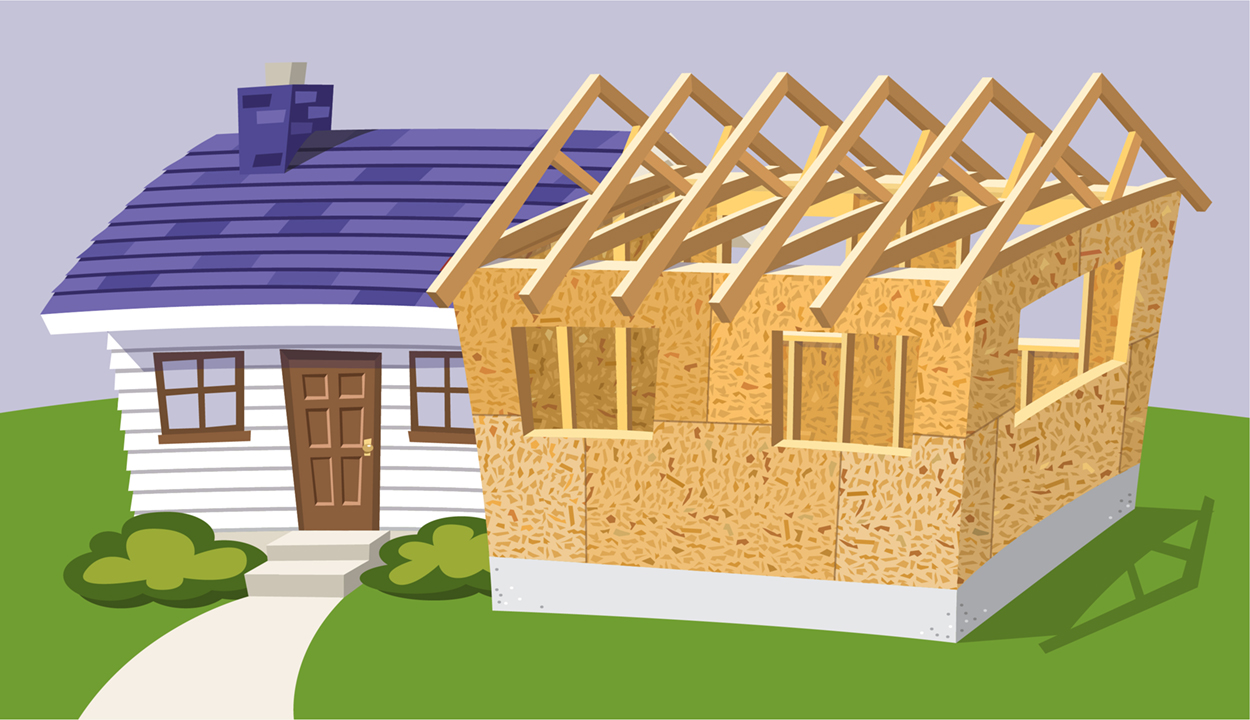Home additions can be an excellent way to expand your living space and add value to your property. Unfortunately, financing a home addition can present some difficulties for some homeowners. In this guide, we will explore various financing options and provide helpful tips on how to finance a home addition.
Calculating the Cost of a Home Addition
To begin financing a home addition, you must first determine the total cost of the project. This includes materials, labor and any necessary permits. Once you have an estimate for total expenses, you can begin exploring financing options.

Take for instance, you decide to add a bedroom to your home. After researching the cost of materials and labor, you estimate it will come out to approximately $50,000. Furthermore, checking with the local government to see if any permits are necessary will reveal that a building permit will cost an additional $2,500.
With an estimated cost of $52,500, you can begin exploring financing options. These may include taking out a home equity loan which allows you to borrow against the equity in your house or getting a personal loan from a bank or credit union. You could also consider refinancing your existing mortgage to include the additional cost or using a credit card with low interest rate for project financing. It’s essential that you carefully weigh each option’s terms and interest rates before making a final decision.
Home Equity Loans and Lines of Credit: Are they right for you?
One popular way to finance a home addition is with either a home equity loan or a line of credit. A home equity loan is an annualized fixed-rate loan that uses your house as collateral; similarly, the Home Equity Line of Credit (HELOC) is a revolving line that uses your residence as security.
Home equity loans and lines of credit can be an attractive financing options for a home addition, as they usually feature lower interest rates than credit cards or personal loans. However, keep in mind that if you default on the loan, you could potentially lose your house.
If you want to add a room to your house, borrowing money for construction costs could be necessary. Instead of taking out an expensive personal loan or maxing out credit cards, consider getting a home equity loan or line of credit instead.
Personal Loans
Another viable option for financing a home addition is through a personal loan. Personal loans are unsecured funds that can be used for various purposes, including home improvements.
Personal loans tend to have higher interest rates than home equity loans or lines of credit, but they can be an advantageous option if you don’t own any equity in your home and don’t want to risk losing it.
Let’s say you want to add a room to your house but lack enough equity for a home equity loan or line of credit. In this instance, taking out a personal loan might be your best bet.
After some research, you discover a lender offering personal loans tailored toward home improvements. After applying and being approved for a $25,000 loan with an interest rate of 10%, the project begins.
Over the next year, you use your loan funds to hire a contractor, purchase materials and finish the room addition. You make monthly payments on the loan until it’s completely repaid after 12 months.
Credit Cards
Credit cards can also be used to finance a home addition, but it’s best to proceed with caution. Credit cards typically carry higher interest rates than other financing options and if you carry a balance on them, the charges can add up quickly.
If you choose to finance a home addition with a credit card, look for one with either an attractive interest rate or an introductory 0% APR offer. Be sure to pay off the balance promptly in order to prevent accruing additional fees.
Government Programs
You have several government programs available to finance a home addition. One popular option is the Federal Housing Administration’s 203(k) loan program, which offers loans for repairs and improvements to residential properties.
Other government programs include the Department of Agriculture’s Rural Repair and Rehabilitation program and Veterans Affairs’ Adapted Housing Grants.
Contractor Financing
Finally, some contractors offer financing options for home additions. These may be ideal if you don’t qualify for other forms of financing or prefer working with a specific contractor.
However, be sure to read the terms and conditions carefully before agreeing to any financing options offered by a contractor. Some financing options may have high-interest rates or hidden fees.
Take, for example, a contractor offering financing with a 0% interest rate for the first year. However, if you fail to pay off all of the balance within that first year, the interest rate increases to 20%. Furthermore, there may be hidden fees and charges that weren’t disclosed upfront.
If you don’t read the fine print carefully, you could end up with a much higher interest rate and unexpected charges that significantly raise the cost of your home addition project. It’s essential to ask questions and fully comprehend all terms and conditions associated with any financing options before agreeing to them.
Financing a home addition can be daunting, but there are several options available. By estimating the cost of the project and researching different financing options, you’ll be able to identify the most affordable way to fund your addiction.


